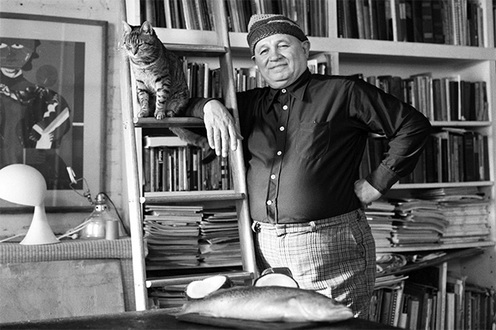 Image courtesy of Library of Congress, Prints & Photographs Division, Carl Van Vechten Collection |
Romare Bearden | |
| Birth Date: September 2, 1911 |
||
| Death Date: March 12, 1988 Artist Gallery |
||
| Romare Bearden was born in Charlotte, North Carolina in 1911. Three years later, his family moved to New York City’s Harlem. During the mid-30s, when Bearden was a student of George Brosz at the Art Students League, he founded the 306 Group for black artists living in Harlem.
During the 40s, Bearden combined African symbols such as masks and “conjure women” with stylized realism. In 1950 he went to Paris and enrolled at the Sorbonne, returning to New York City in 1954. After his stay in Paris, Bearden’s work became more abstract. In the 60s the Civil Rights Movement influenced Bearden.
Bearden, always a humanist, finally realized the strength of his southern memories and the Harlem culture of his youth in the 60s. Transforming specific often-humble incidents into universal themes, he classified and gave a lasting aesthetic identity to one variety of the American experience. Bearden endorsed this thought when he wrote: "It is not my aim to paint about the Negro in America in terms of propaganda. (It is to depict) the life of my people as I know it, passionately and dispassionately as Breughel. My intention is to reveal through pictorial complexities the life I know."
Throughout his career, Bearden promoted opportunities for African American artists. He served as Art Director of the Harlem Cultural Council and helped organize the Clinque Gallery. In 1969, he wrote "The Painter's Mind" with Carol Holty.
By the time he passed away in 1988, Romare Bearden was considered a cultural icon.
|
||


